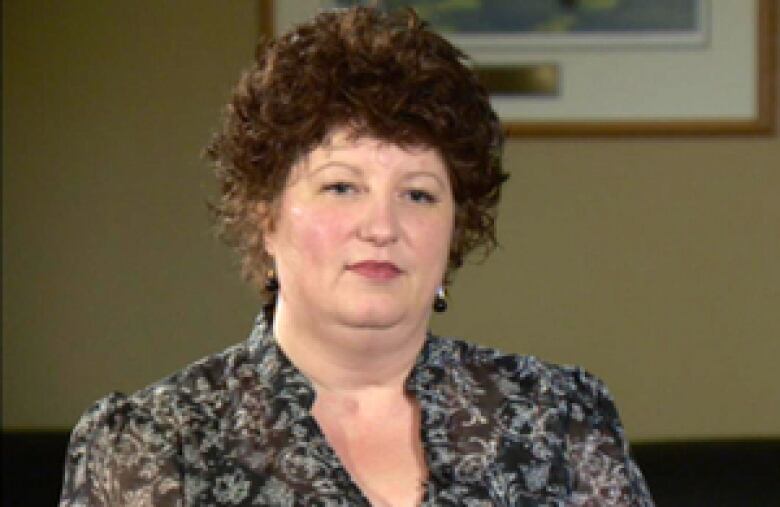Playground equipment involved in rising number of injuries
Experts concerned about lack of mandatory standards
More than 28,000 children are injured every year on playgrounds across Canada, and the rate of hospitalizations has gone up by eight per cent between 2007 and 2012, CBC News has learned.
Even though playgrounds continue to be upgraded and made safer, experts point to a lack of consistent standardstogether with problems maintaining playground surfaces properly with the continuing rate of injury.
In all jurisdictions in Canada, play structures only need to adhere to the Canadian Standards Association standards in the year they werebuilt, and no upgrades are mandatory.Some experts think that has to change.
"If equipment does not meet the standard then children should not be allowed on that equipment, said Debbie Friedman, director of trauma at the Montreal Childrens Hospital.
Because I think we are only setting them up to potentially have a serious injury, she said.

Pamela Fuselli, of Parachute, a national injury prevention organization, said that over 28,000 children are hurt every year on playgrounds.
Friedman agreed and saidwithin that number of 28,000 children injured every year, the severity of the injuries can vary.
"I think it encompasses everything, it is the children who are coming in with a bruise, or a strain or a fracture and a concussion or more serious head trauma you know or spinal cord injury. It measures all severities." she said.
"The majority of the kids we see do not get hospitalized, but that 10% that does get hospitalized do require many interventions sometimes surgeries and sometimes its a long hospitalization with a lot of rehabilitation." she added.
"It is something to take seriously."
Friedman emphasized that not all injured children are seen by medical professionals and many are seen by family doctors and walk in clinics.
Fuselli echoedthe concern about the lack of mandatory CSA standards and she calledfor more regulations to prevent injuries.
There isn't a national body that regulates playgrounds, so while there are CSA standards for playgrounds, they're voluntary, she told CBC News.Some municipalities have adopted them, or written them into their bylaws and guidelines that structures need to meet these standards,
There isn't a body that oversees if that is put into place or not, she said.
Studies show that playground surfaces and equipment that meet the standards and are properly maintained lead to fewer injuries.
According to the Canadian Paediatric Society,"Playgrounds modified to meet the current CSA standard can reduce associated injuries by as much as 49 per cent."
Playgrounds can be made safer
Research also shows that playgrounds can be made safer and that the playground surface is usually the most important factor.
CBC News tested a Winnipeg playground with Keith Thomas, a risk management expert with the Manitoba Association of School Boards.
Thomas operates a tool called the Triax 2000 that measures the impact of a playground fall on a steel ball meant to simulate the weight of a childs head.
The tool is on a tripod that holds a steel ballfilled with sensors at the height of a play structures highest point. Whenreleased itmeasures theforce of the fall.
He told CBC News that playgrounds frequently fail the test, which is considered a score 1,000 and over, because of inadequate surfacing.
What happens in many cases is people only have the bare necessity when it comes to sand or pea gravel, Thomas said. We're trying to educate them to have 10 inches frequently there is less than 10 inches.
Maintenance of the surface is another problem that Thomas pointedout.
As children pound theplayground, a cement-like surface results that will not protect them from fractures and other serious injuries.
Thats why maintenance is such a big issue, said Thomas. If we have good protective surfacing and we can reduce those numbers of falls it will reduce the overall injuries that children suffer on playgrounds.
The playground CBC News tested came in at 981, but Thomas pointed out that without proper maintenance, that playground surface may fail in the future.
It looks like concrete but it's actually a hard surface that needs to be broken up, he said. It definitely points to the need for proper maintenance.

Fuselli said that the playground surface should be deep and soft, and that could go a long way in preventing injuries.
Fractures are the most common injury that we see from playgrounds and those are due to falls, she said. And falls cause not just fractures to arms and legs but the more serious ones like head injuries.
She also emphasizedmaintenance and said that regular upkeep should be a part of any playground management.
Serious hospitalization rates due to playground injuries across Canada alsovary by region.
By province, Saskatchewan has had by far the highest injury rate by population, more than double the rate for both Ontario and Quebec.
Manitobas rate almost doubled from 2007, at 48 serious hospitalizations, to 77 incidents in 2011.
The data also shows a steady increase in playground-related hospitalizations starting in 2006.
According to numbers provided to CBC Newsby the Canadian Institute for Health Information, there had been a gradual decrease in all injury-related hospitalizations including those due to playground injuriessince 1994.
Gone up steadily since 2006
The number of playground hospitalizations, however, has gone up steadily since 2006.
Again, experts cannot say why there has been an increase, but they point to numerous factors including parental supervision, an increase in the number of playgrounds and the prevalence of multi-age structures.
Friedman told CBC News that there has been an increase in play structures geared fordifferent ages being built in the same area, and this can cause big problems.
The sections for older kids are a lot more enticing to the younger kids, and if they are on it then they clearly need a different level of supervision.
Friedman also believes that parents play a major role in keeping their kids safe.
Supervision in this type of activity means eyes on the child, being in arms length and not being halfway across the yard on your cellphone having coffee with a friend," Friedman points out.
Fuselli agreed, but said that risk of serious playground injuries needs to be measured against the benefits of physical exercise.
Where are the kids playing if there isn't a playground?" Fuselli asked. "Are they in the street, are they doing more unsafe behaviours or activities?"
"We'd all agreethat physical activity, being outdoors, is extremely important for a childs motor development, psychological development. They're developing their social skills, and I think we want to encourage activity," Friedmanadded.
She advocates for a ban on play structures that are not approved.
I think if it doesnt meet the standard then it shouldn't be used. I think we know enough in this day and age that is a straightforward principle, she said. We are concerned because certainly you dont need to have a hundred of the same injuries to get the idea that theres a problem.
Corrections
- This story originally reported that in all jurisdictions in Canada, play structures only need to adhere to "Canadian Safety Association" standards. The correct name of the organization is the Canadian Standards Association (CSA).Sep 18, 2013 3:34 PM ET













_(720p).jpg)


 OFFICIAL HD MUSIC VIDEO.jpg)
.jpg)



























































































